Since becoming re-interested in film shooting a couple of years ago, I’ve acquired a modest but high-quality collection of classic cameras: a Nikon FM and FE, a Mamiya M645, Olympus XA, Canonet QL-17 GIII, a couple of Yashica-Mat TLRs, a Rolleiflex 2.8C, and most recently, a Rolleiflex 3.5 MX-EVS (I also have a FujiFilm X100f, which is a damned fun little camera). I’d love to get a primo Leica at some point, or a Plaubel Makina or Mamiya 7, but for now, such indulgences are the stuff of fantasy. I paid less than $150 for most of my current cameras, and no more than $300 for any of them (X100f excepted). None are immaculate, but they’re all solid shooters. I find them beautiful beyond words.
With several cameras in my regular shooting rotation, I then faced a choice: what film in what camera? I like to keep Portra loaded into at least one of the medium-format cameras, and one of my favorite Ilford black-and-white stocks in another. As I’ve written on this site, I love the results I get with FujiColor Pro 400h in the Olympus XA. It would be nice, I figured, to have a similarly pocketable 35mm companion to the XA to keep loaded with black-and-white film.
And so I began searching for a Rollei 35. I read a lot of stuff online, and decided I’d prefer the 35S, with the Sonnar lens. I didn’t care whether it was made in Germany or Singapore. I kept my eye on the local Craigslist and Facebook Marketplace listings (I’ve found wonderful deals on both, and I prefer to buy in person rather than through eBay), and asked the used-gear folks at National Camera here in town to alert me if one came in. Weeks passed, and my fever began to build. With ample downtime courtesy of the pandemic, I cruised the websites of the national retailers as well, and soon found a Singaporean Rollei 35S at KEH with the condition rating of “Bargain,” meaning, not pretty, but usable. At $225, it was more than I preferred to spend, but I liked the idea of a six-month return window, and figured that was worth paying a bit of a premium. Also, by now, acquisition frenzy had truly overcome me. The camera arrived later that week.
Once in my eager hands, I found my new/old Rollei to be an exquisite, albeit slightly dinged, little piece of equipment. There was a dent on the top right corner, which affects nothing (and probably knocked $75 off the price). There’s a dot of some sort on the front lens, but I hoped this wouldn’t affect picture quality (it hasn’t).
Like the Olympus XA (I previously wrote about), this Rollei is quite literally a pocket camera. With the lens retracted (and a film canister lid as an eerily-well-fitting lens cap), it measures 47mm front-to-back (the Olympus comes in at 41 mm). I may not slide it into a jeans pocket, as I have with the XA, but it certainly fits easily in any jacket pocket, or the side pocket of my backpack.
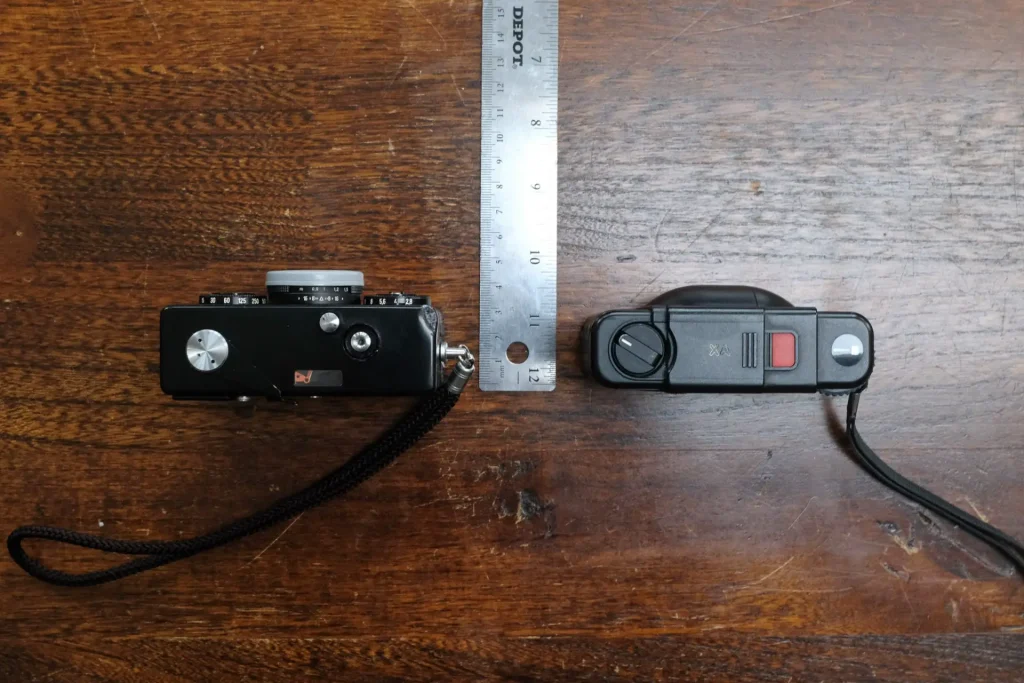
Man, this is a dense little chunk of a thing, very unlike the XA, which, as much as I love it, looks and feels like what it is: a plastic camera. I enjoy (most of) the Rollei’s quirks, such as the lefty film-advance lever, and having the film counter on the bottom. The film return crank is a buttery, powerful wonder compared to the XA’s teensy little plastic flip-lever. I like how you slide the whole camera back down and off to load film. I had a concern that the battery compartment was stashed inside here as well, meaning that you have to open the entire camera to change the battery. What if that happened mid-roll? No problem: only the meter requires electricity, leaving you with a fully functional mechanical camera with which you can shoot the rest of the roll using a phone app for metering, or Sunny-16-based guesswork.
Speaking of guesswork, I should now broach the subject of this little camera’s big ol’ (and for some, no doubt disqualifying) quirk: there’s no focusing aid other than your own eyes. There’s simply no room for it. This is a viewfinder camera, not a rangefinder. The viewing window shows you a frame, but to focus, you squint thoughtfully at your subject, you look at the distance markings on the lens…and you make your best guess. This is not an issue if you’re shooting far-off exteriors at f8 or higher in good light, but if you want to shoot, say, a cappuccino cup on a nearby café table at f5.6 or wider, you’ve got to be really confident in your squinting-and-guessing ability. Being a half-foot off can ruin the shot.
(Since acquiring this camera, I’ve entertained myself by honing my distance-estimating skills. At this moment, my dog is sleeping, I’d say, eight feet from me. The nearest knob on my oven looks to be about five—maybe five-and-a-half—feet away, and the farthest knob, more like six feet. The blue chair in my backyard: 25 feet, give or take. And so on.)
I ran some Portra 400 through the camera as a test roll, since I get my color stuff processed at a very good local lab (Hello, Fast Foto friends!), and I wanted to judge performance based on the best possible image files (I develop and scan my own black-and-white, which I find very satisfying and enjoyable, and which saves me a ton of money, but the results can be…let’s be charitable and call them “charmingly amateurish.”). The roll of Portra was wonderful, with luminous color, and amazing sharpness when stopped down. This little camera is capable of making amazing pictures. And the lens dot was not an issue.
But I’d bought the Rollei 35S as my black-and-white pocket camera. What film to choose? As a classic, beautiful, solid camera, I figured it merited a classic, beautiful, solid film (which, hopefully, would yield classic, beautiful, solid results). I loaded it with Kodak Tri-X 400. Could a decision be more obvious?
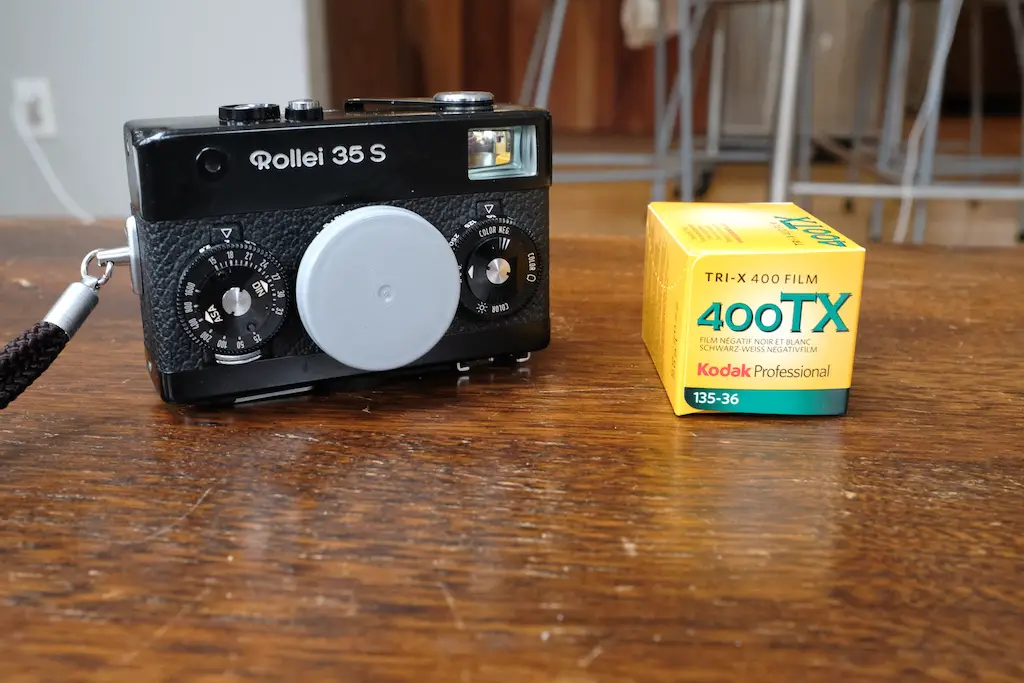
This article shows some of the results of this first roll of Tri-X, developed at home with Kodak T-MAX, and scanned on my CanoScan 9000F Mark II using SilverFast. I purposely tested the limits of what I could do with this film in this camera, both in terms of exposure, and focusing. It’s a test roll; I was more interested in technical aspects than aesthetic results, and so some of the shots are kind of…stupid. But they did what they were supposed to do, which is show me what I can hope and expect from this film/camera combo.
As expected, nearby subjects shot at wide apertures were pretty hit-and-miss; on those shots where I nailed both exposure and focus, the results are pretty impressive. On those where I missed, well, a lost frame on home-developed black-and-white 35mm film is a lot cheaper than a lost frame of 120 Portra in one of the Rolleiflexes. And some of the imperfect frames were still damned beautiful.
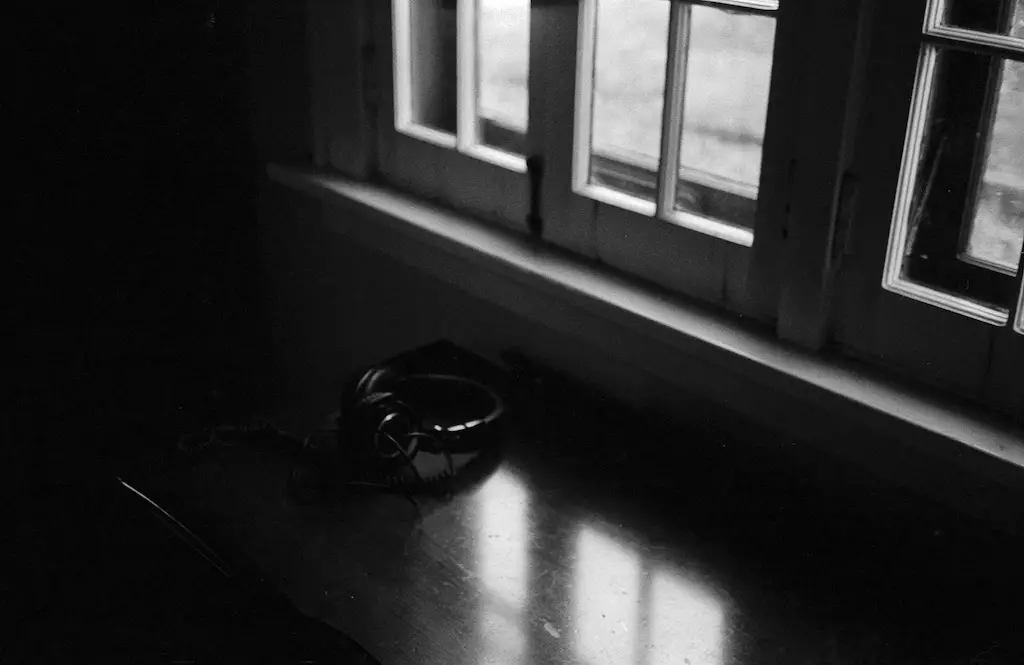

Most importantly (to me), this legendary emulsion, in this iconic camera, gave me some absolutely timeless-looking frames, with hopes of many more to come. Can my phone take better technical photos than this? Of course. Will they look like this? Well, you’re reading a classic camera website; I suspect I know your preference.
As I write this, the XA and the Rollei are in a drawer by my back door, with 400h in the former, Tri-X in the latter. Next time I leave the house, no matter where I’m going, I’ll glance outside, ask myself “Is it a color day or a black-and-white day?” grab the appropriate camera, and slide it into a pocket. Then later, I’ll see a solitary skater crossing the now-frozen lake near my house, or sunlight hitting a fence just so, and I’ll have a wonderful camera and film there to capture the shot. The adage “The best camera is the one that’s with you” meant more before there was an incredible camera in everyone’s phone, but for those of us who choose the more laborious (and satisfying, and beautiful) resource of a classic film camera, I feel like I now have a really exceptional pair of tools.

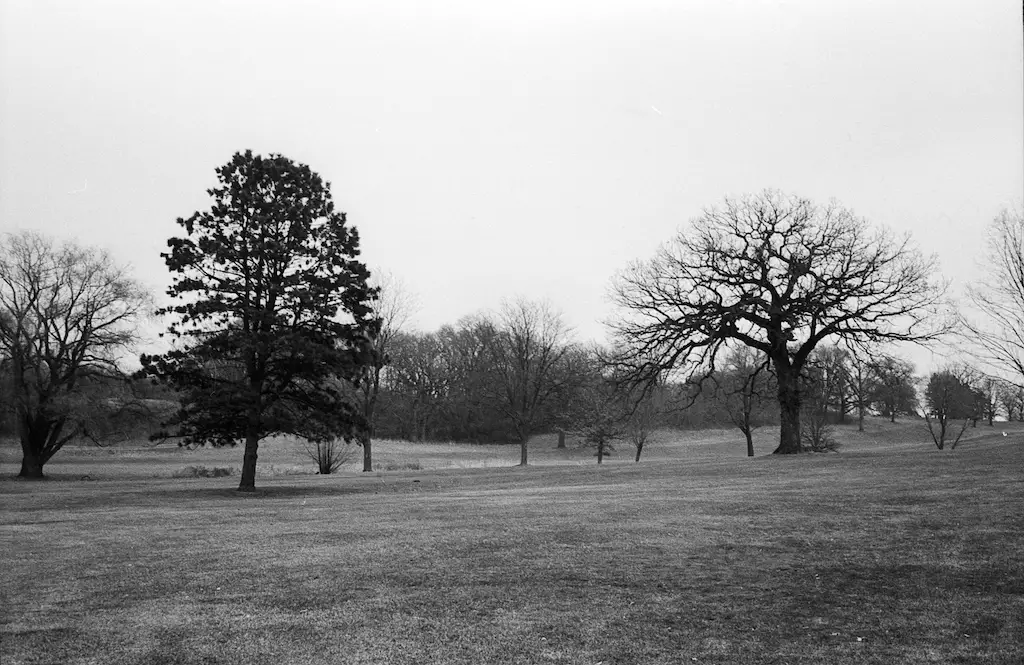

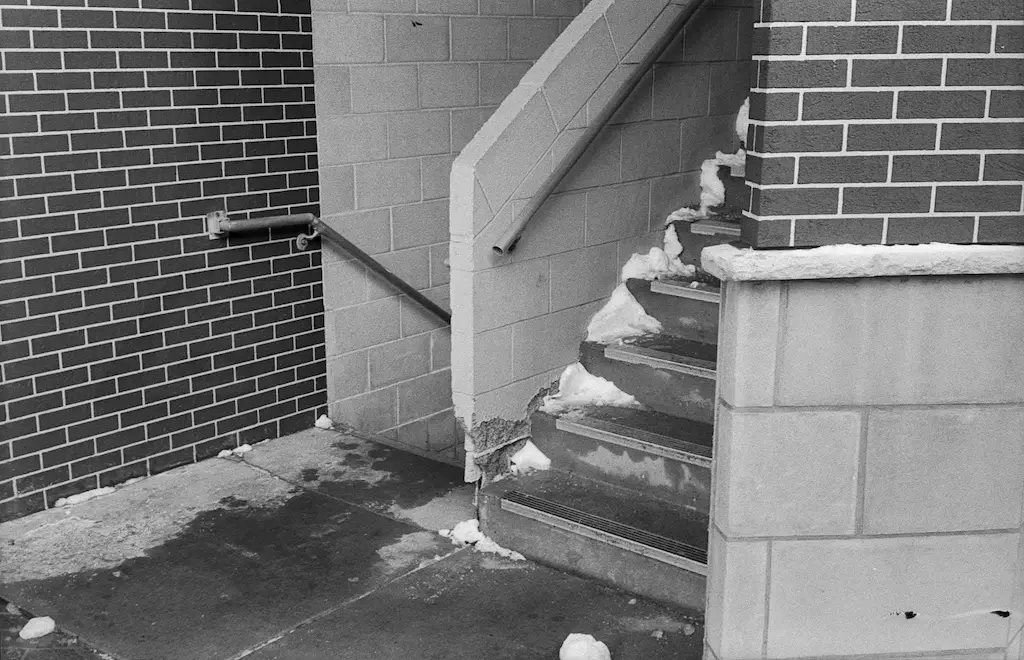

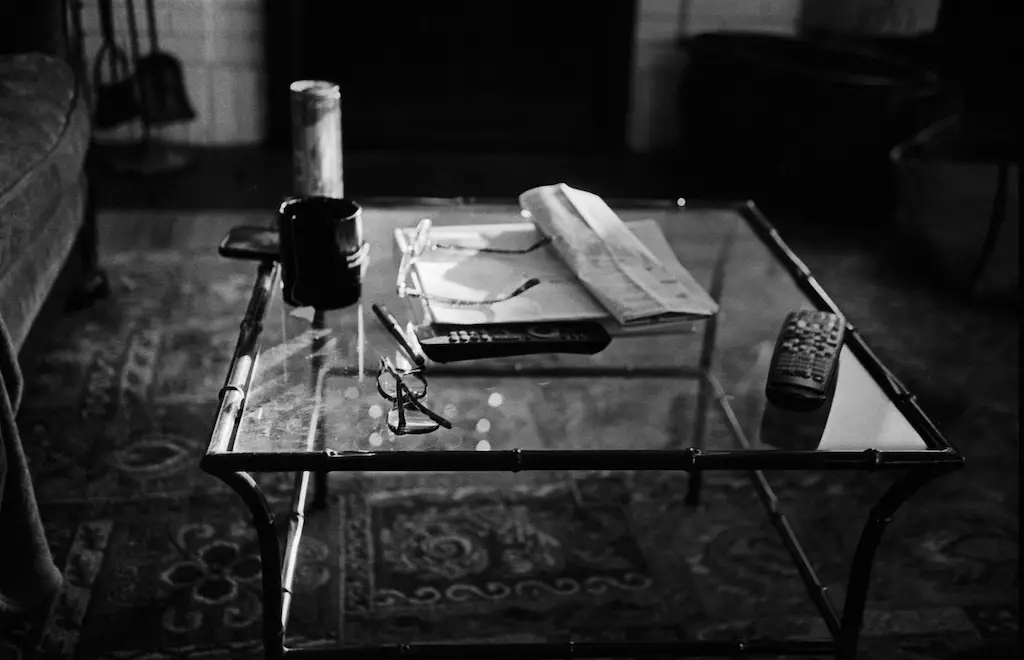
Phil Calvit is an ad copywriter and classic camera hobbyist in Minneapolis. You can see his work on Instagram here.
Share this post:
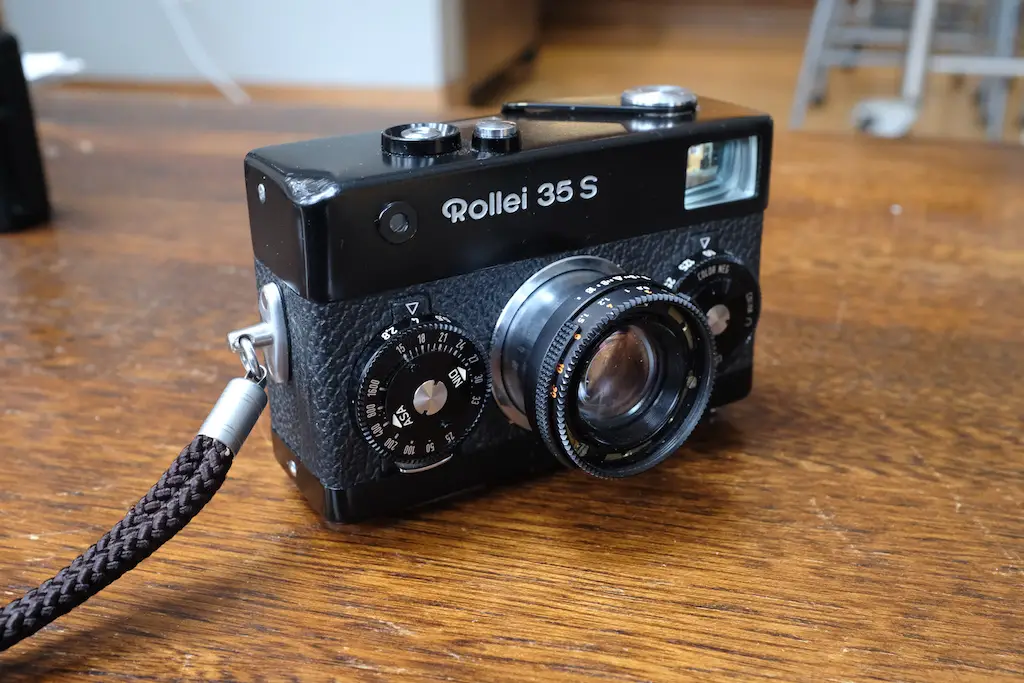








Comments
Eric Norris on Rollei 35S & Choosing a Film Partner for Another Pocket Camera – by Phil Calvit
Comment posted: 03/02/2021
Comment posted: 03/02/2021
Comment posted: 03/02/2021
Ian R on Rollei 35S & Choosing a Film Partner for Another Pocket Camera – by Phil Calvit
Comment posted: 03/02/2021
Comment posted: 03/02/2021
Gauthier on Rollei 35S & Choosing a Film Partner for Another Pocket Camera – by Phil Calvit
Comment posted: 03/02/2021
Comment posted: 03/02/2021
Pete on Rollei 35S & Choosing a Film Partner for Another Pocket Camera – by Phil Calvit
Comment posted: 03/02/2021
Comment posted: 03/02/2021
Comment posted: 03/02/2021
Clive W on Rollei 35S & Choosing a Film Partner for Another Pocket Camera – by Phil Calvit
Comment posted: 03/02/2021
Comment posted: 03/02/2021
Comment posted: 03/02/2021
Comment posted: 03/02/2021
Jamie W on Rollei 35S & Choosing a Film Partner for Another Pocket Camera – by Phil Calvit
Comment posted: 04/02/2021
I’ve had the Rollei around 6 months and now feel comfortable zone focusing, it has also been a great learning tool for sunny 16 exposures. I too mainly use it with BW (most often HP5, over exposed a stop or so), though I have read the sonnar lens has great colour rendering - have been meaning to find out for myself.
Anyhow, my latest addition has been the M645 though a month in and I’m still struggling to obtain the resolution and sharpness I had wanted (expected) from my step up to 120. I was wondering how you get on with that particular camera, and if you’ve had hood results from it?
Comment posted: 04/02/2021
Comment posted: 04/02/2021
Comment posted: 04/02/2021
Adrian Cullen on Rollei 35S & Choosing a Film Partner for Another Pocket Camera – by Phil Calvit
Comment posted: 04/02/2021
Scott Gitlin on Rollei 35S & Choosing a Film Partner for Another Pocket Camera – by Phil Calvit
Comment posted: 05/02/2021
Michael J on Rollei 35S & Choosing a Film Partner for Another Pocket Camera – by Phil Calvit
Comment posted: 05/02/2021
So keep using a zone-focus camera for long enough and it will become second nature. Cold shoe rangefinders are OK but they mess up the top of the camera functionally and aesthetically.
I'm also impressed at your collection- 'proper' Rolleis are lovely. Can I suggest the next stage of descent into camera insanity, that you acquire a cheap beaten up 4"x5"? I've recently done so and it's giving me so much fun. :)
Comment posted: 05/02/2021
Kodachromeguy on Rollei 35S & Choosing a Film Partner for Another Pocket Camera – by Phil Calvit
Comment posted: 08/02/2021
A.Phillips on Rollei 35S & Choosing a Film Partner for Another Pocket Camera – by Phil Calvit
Comment posted: 16/02/2021
Anthony Phillips on Rollei 35S & Choosing a Film Partner for Another Pocket Camera – by Phil Calvit
Comment posted: 16/02/2021
les on Rollei 35S & Choosing a Film Partner for Another Pocket Camera – by Phil Calvit
Comment posted: 07/03/2021
Caroline Harding on Rollei 35S & Choosing a Film Partner for Another Pocket Camera – by Phil Calvit
Comment posted: 08/06/2023